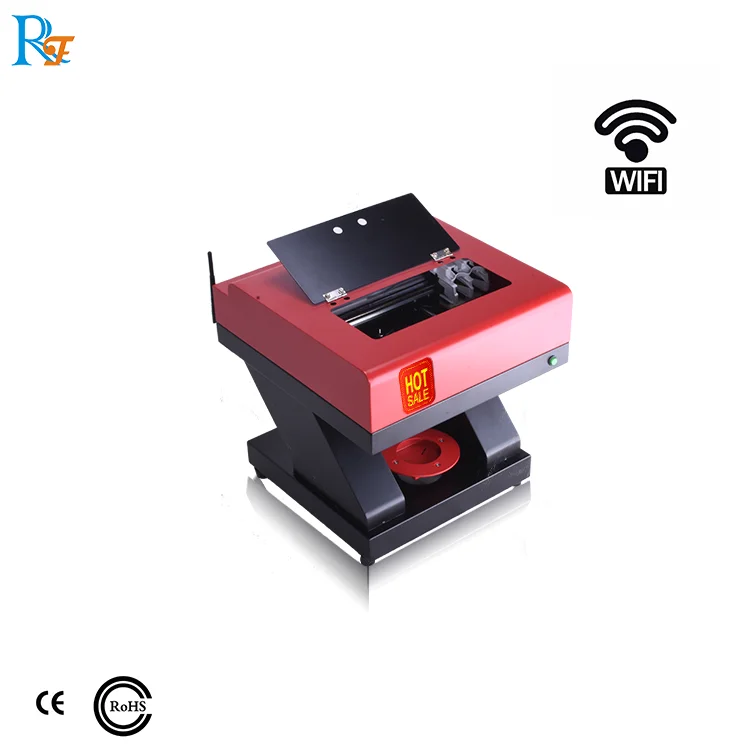The “Eleventh Five-Year Plan†outline of China proposed that the energy consumption per unit of GDP should be reduced by 20% and the total discharge of major pollutants should be reduced by 10%. According to statistics, in 2006, when the "Eleventh Five-Year Plan" began, China's GDP, energy consumption, chemical oxygen demand, and sulfur dioxide and other major pollutants were all not up to standard. It can be seen that the situation of energy saving and emission reduction is grim and the task is not light. Energy saving and emission reduction are currently a serious issue facing all walks of life in China. This article believes that to carry out energy-saving emission reduction work, we must develop a circular economy, and pharmaceutical companies need to take measures simultaneously, "soft" and "hard" concurrently, take the road of sustainable development. The relevant recommendations it mentioned are worth considering by pharmaceutical companies.
Faced with the enormous challenge of environmental issues, circular economy based on effective use of resources and protection of the environment has received increasing attention. The circular economy has become one of the hot topics in the international arena. For pharmaceutical companies, taking the development of a circular economy is the best way. And how to better embark on this road, more and more pharmaceutical companies are concerned.
Coordinated development
The circular economy is based on the principle of “reduction, reuse, and resource utilization†to realize “low exploitation, high utilization, and low emissionâ€. It is centered on the multi-purpose utilization and recycling of resources, and maximizes access to production and consumption systems. The substance and energy improve the quality and efficiency of economic operation, and achieve economic growth coordinated with resources and environmental protection, and are consistent with the concept of sustainable development.
The “reduction†principle of circular economy refers to the reduction of resource consumption and waste generation as much as possible in the production and service process. The core is to improve the efficiency of resource utilization; the “reuse†principle refers to the repeated use or repair of products. Continue to use after refurbishment or remanufacturing, extend the life cycle of products as much as possible, and prevent products from becoming wastes prematurely; the principle of “resources†refers to the maximum conversion of waste into resources, turning waste into treasure, and Harm to harm can reduce the consumption of natural resources and reduce the emission of pollutants. The circular economy requires enterprises to save energy and reduce consumption, increase resource utilization efficiency, and realize reductions; comprehensive utilization of waste generated in the production process is extended to recycling of waste materials and recycling, reducing the impact of economic activities on the natural environment to Minimal degree.
According to the above three levels of circulation, the pharmaceutical industry can start from the aspects of improving the efficiency of resource utilization, energy recycling, water recycling, and utilization of solid waste, and achieve the goal of energy conservation and emission reduction.
System advancement
Pharmaceutical production is a large production process with multiple processes and multiple links and highly integrated technological processes. To realize energy conservation and emission reduction, we must establish a sense of continuous, efficient, and cyclical development, and promote recycling as an important development strategy. Pharmaceutical companies can take different measures depending on the production process.
Reduce consumption and emission reduction According to the idea of ​​cleaner production, analyze the production process from the entire life cycle of the product. Using new technologies and new technologies, the production process has been developed in the direction of simplification, compactness, large-scale and continuous. Minimize the flow of material and energy into the production process, thereby reducing waste generation and emissions. The adoption of multi-use waste and measures to increase the recovery rate of wastes at various production stages will reduce the input-output ratio of enterprises and the energy consumption per ton of products, and will reduce the consumption of energy and materials for tons of products. Facing the market, adjusting and optimizing the product structure, increasing the processing depth of products, and producing more high-performance, high-value-added products needed by the market, making the production cost of pharmaceutical products lower, the market more competitive, and achieving the economic benefits of pharmaceutical production. And the environment "win-win."
——Optimize the connection and cooperation between production process and process, reasonably reduce input-output ratio, cancel or reduce high energy consumption processes, reduce resource waste, and reduce the environmental burden of pharmaceutical companies.
——Optimize product structure and increase production levels. Mainly to improve product quality, reduce unnecessary loss; implement standard operations, reduce energy consumption, material consumption, slag amount and material loss, reduce production costs; improve yield, improve production technology and economic indicators; to achieve a reasonable ratio of the process and waste Productive supplemented by a reasonable production structure.
——In the production process, the maximum and sustainable use of various renewable resources (including plastic bags, packaging barrels, etc.), and the use of irreversible resources, to achieve the recycling of waste.
- Use cleaner production measures that maximize the use of resources, maximize the efficiency of energy use, increase the value of pharmaceutical waste, and minimize the production of "three wastes" to achieve waste reduction and harmlessness to protect the environment.
For example: Clobetasol Propionate is an old product with a relatively backward technology and produces a large amount of wastewater during production. Through the technological innovation of clobetasol propionate, it not only reduces the production cost but also reduces the amount of waste water discharged; the original clobetasol propionate process uses a large amount of organic solvents in the production, and after the new process of clean production, the cyclic ester is produced. The “hydrolysis†and “sulfonation†and “chlorination†reactions have achieved “one-pot fryingâ€, and some of the solvents have been removed. The ratio of raw materials has been adjusted, the raw material costs of the products have been greatly reduced, the production cycle has been significantly shortened, and the labor protection of operators has been obtained. As a result of the improvement, the amount of "three wastes" produced has also been significantly reduced, resulting in good economic and environmental benefits.
Recycling of energy sources Reduce the consumption of primary energy sources from the source and reduce the amount of pollutants discharged into the atmosphere.
——Promote advanced energy-saving and environmental protection technologies, eliminate or transform wasteful production and backward production processes and equipment with serious pollution, make old industrial bases modernized, and embark on the path of development of new-type pharmaceutical companies to achieve “low investment and high output†, low pollution, high efficiency, sustainable development" strategic objectives.
- Strengthen energy and environmental management. Including the establishment of energy dispatch centers, the implementation of centralized management of all kinds of energy and unified deployment, the scientific and comprehensive energy conservation and environmental monitoring and management system into the production management, in order to promote governance. For example: Use "contract energy management." The successful case was the cooperation between Xinyi Vientiane and Hangzhou Kewei Energy-saving Technology Co., Ltd., which used the principle of fluid science to carry out power-saving transformation of the frozen water pump and the refrigerant pump system, and the power-saving effect was over 50%.
——Facing society. On the one hand, the secondary energy generated during the production of pharmaceutical products is used in urban life to improve urban air quality; on the other hand, relevant conditions are used to establish a social waste innocent treatment center.
Water recycling Establish multi-level water recycling ideas within the process and within the company, increase the concentration of recycled water, reduce the consumption of water resources, and reduce the amount of industrial wastewater discharged from the recycling system. For example: All types of cooling water are recycled after cooling and simple treatment.
Strengthen Information Management The modernization of energy dispatching, environmental protection supervision, and comprehensive utilization of wastes will be promoted through the use of informatization, and energy-saving and environmental monitoring networks will be established to achieve a win-win environment and economic benefits.
Strengthen the construction of enterprise information management system, and integrate information such as raw material management, product management, energy dispatch, energy conservation management, environmental protection supervision, and the generation and utilization of various types of waste into the company's information management system. According to the relevant requirements of cleaner production and recycling economy, real-time statistics and monitoring of energy consumption, material consumption, and pollutant generation and emissions in the entire production process ensure the effective implementation of all measures for cleaner production and recycling economy.
Strengthen personnel training In order to meet the needs of enterprises in implementing circular economy and cleaner production planning, enterprises need to formulate training programs for energy, environmental protection, information, and comprehensive utilization of various types of waste management and service personnel: to carry out cleaner production and circular economy concepts for corporate leadership. On training; on corporate management and technical personnel to carry out clean production and circular economy methodology training; on the company's relevant departments of cleaner production auditors training.
It is proposed to set up an expert advisory committee on circular economy and clean production, composed of experts from both inside and outside the enterprise, and hold regular meetings to offer advice and suggestions.
Establishing relevant incentive mechanisms Various types of cleaner production programs that are effective in energy saving, consumption reduction, pollution reduction, efficiency enhancement, and waste utilization are rewarded according to the effect of implementation and promoted in a timely manner.
Faced with the current situation of continuous reduction of resources and an increasingly serious environmental crisis, it is imperative to increase the utilization of resources and energy, ease the conflict between resources and energy shortages, and reduce the pressure on environmental pollution. To carry out energy-saving and emission-reduction work is an inevitable choice for pharmaceutical companies to cultivate new economic growth points. It is an effective way to achieve a win-win environment and economic benefits. It is an important means for pharmaceutical companies to enhance their comprehensive competitiveness. In short, with energy-saving and emission reduction as the core, the development of circular economy is the only way for the sustainable development of pharmaceutical companies.
This is our NEW DESIGNED Selfie Coffee Printer, it can print on milk, coffee, drinks, and milkshake, cakes, chocolates, ect, It is largely updated from the old Coffee Printer,faster speed,lower cost,and more convenient operating system.

Picture
Parameters

Product name
Wifi coffee printer
Ink color(Edbile ink)
Cyan, Magenta, Yellow, Black
Printer head
HP-803 head
Printing speed
20s/cup
Max print resolution
600*600dpi
Max printing size
11*11cm
Print height Adjustment
0-19cm
Printer size
41*43*42cm(Length*Width*Height)
Package size
49*52*52cm(Length*Width*Height)
Operation Temperature
10 ° to 30 °
Wifi
Support
Weight
16Kg
Power supply
AC 220V/110V
Height adjustment
Full automatic
Operation systems
Windows 7-10
Ink system
Ink cartridge
Warranty
Three years
Selfie Coffee Printer
Selfie Coffee Printer,Selfie Coffee Printer Machine,Automatic Selfie Coffee Printer,Digital Selfie Coffee Printer
Shenzhen Refinecolor Technology Co., LTD. , https://www.sztshirtprinter.com